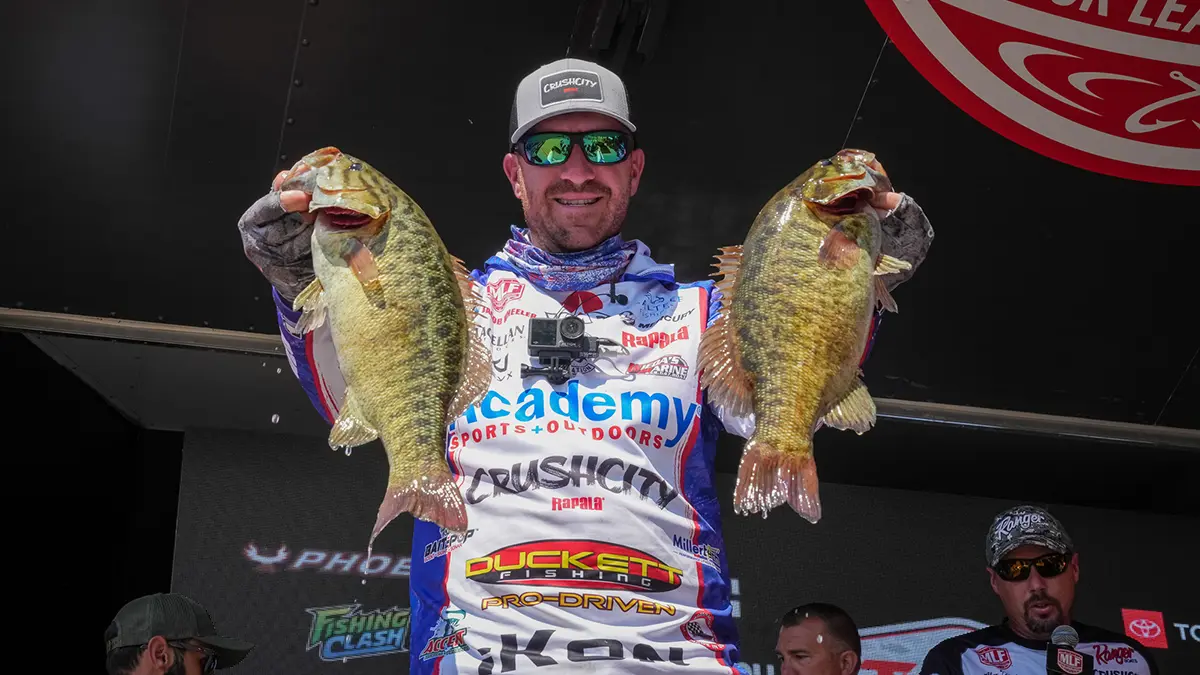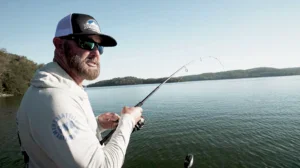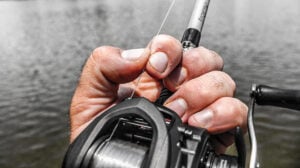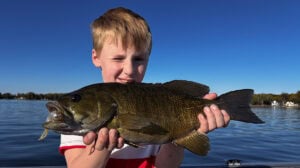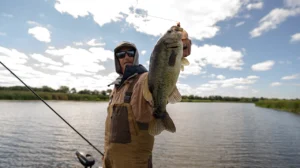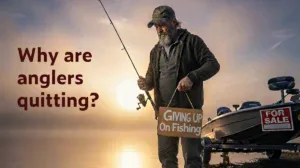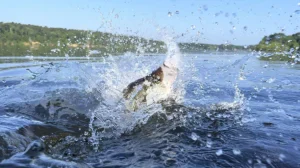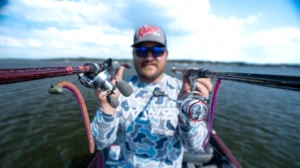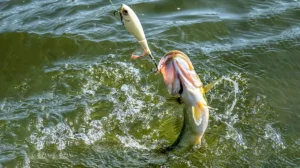Photo courtesy Rob Matsuura/Major League Fishing
When Jacob Wheeler was just a teenager, he learned an important lesson about summer fishing. A mentor taught him about how the lakes would stratify in the dog days of July, August and September. The top layer had the most oxygen but highest water temperatures. The lower layer had cooler water temperatures but virtually no oxygen—and very little life. Just above a magic layer that separated those two zones – a narrow band called the thermocline – was the place to fish.
“He would idle around until he found that fuzzy layer with his electronics and he knew where to fish,” said Wheeler who recently won Angler of the Year honors for the third time on the Major League Fishing Bass Pro Tour. “If he found the thermocline at 15 feet, he would say, ‘We’re not fishing anything deeper than 15 feet today.’ And it would work. We caught bass while others were wasting their time by fishing deeper water that didn’t have enough oxygen to hold fish.”
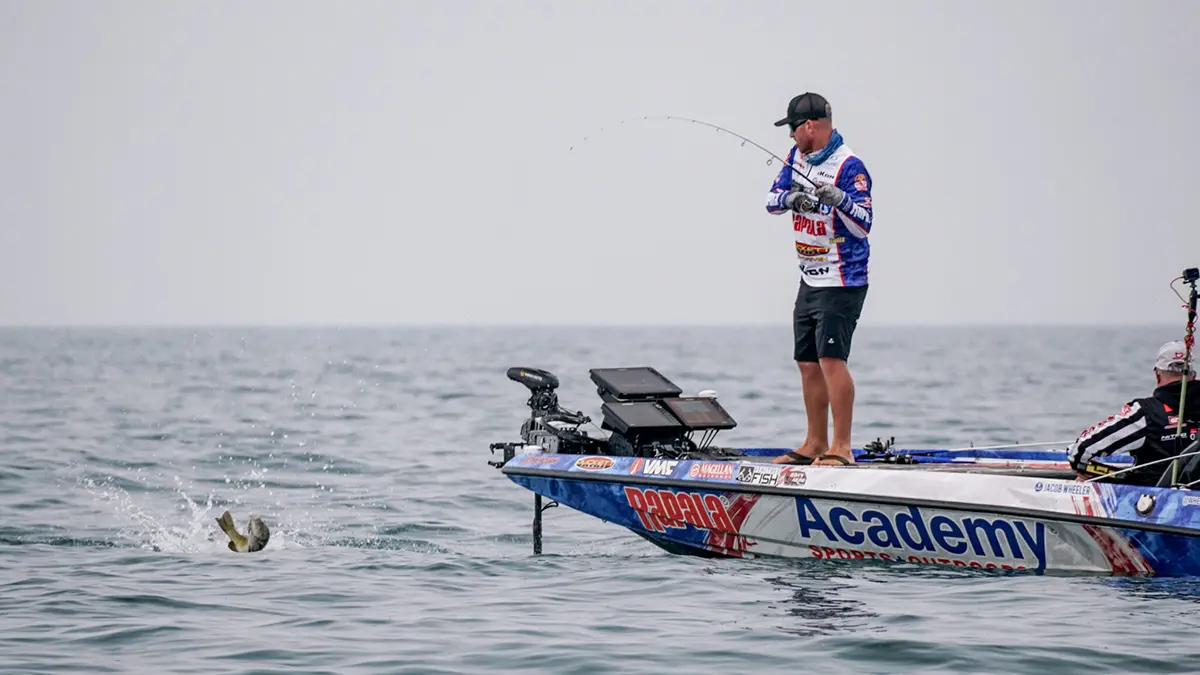
FISHING THE THERMOCLINE FOR SUMMERTIME SUCCESS
Wheeler lives by that lesson today when he fishes in the heat of summer. Lakes begin to stratify by June as the water temperatures rise. The thin thermocline is where the drop in water temperature becomes most pronounced. Just above that layer, baitfish and gamefish have the best of both worlds—ample oxygen and cooler water temperatures.
“Locating the thermocline eliminates half of the water on any given lake in the summer,” Wheeler said. “It tells you where the baitfish and bass want to be and how they set up when the lake stratifies.”
Wheeler learned through experience. Places where he caught bass in June were almost devoid of fish activity later in the summer. The reason? A lack of oxygen. That’s why he sets out to determine the depth of the thermocline early when he is practicing for summer tournaments. It gives him a starting point.
The thermocline often shows up as a narrow, fuzzy band on the screen of a locator. If it isn’t that defined, Wheeler advises anglers to turn up the gain on their units. From there, he looks for structure such as drop-offs, humps and ledges and cover such as brush, rockpiles and timber that intersect that thermocline.
“Typically, the water temperature drops every five feet,” Wheeler said. “When you dive into a lake, it’s warmest in the top layer, but it’s noticeably cooler at the thermocline.”
IMPORTANCE OF FINDING THE THERMOCLINE
Finding that 2- to 3-foot-deep layer can be the key to fishing success. It can set up at different depths and can even vary from day to day on the same body of water, Wheeler said. Heavy winds and waves can temporarily disrupt the depth of thermoclines. Generally, the thermocline sets up deeper in clear-water reservoirs. It may be as deep as 25 to 30 feet in those waters and as shallow as 8 to 10 feet in murky waters. Rivers generally don’t have consistent thermoclines because of the flowing water.
Finding the thermocline doesn’t always translate to fishing for suspended fish. Wheeler remembers a buddy tournament where he found the thermocline surprisingly shallow.
“I got out there and just let most of the other boats go past me,” he said. “Then we went back and hit the shallow cover and caught enough fish to win it.The guys who were out deep didn’t do well at all.”
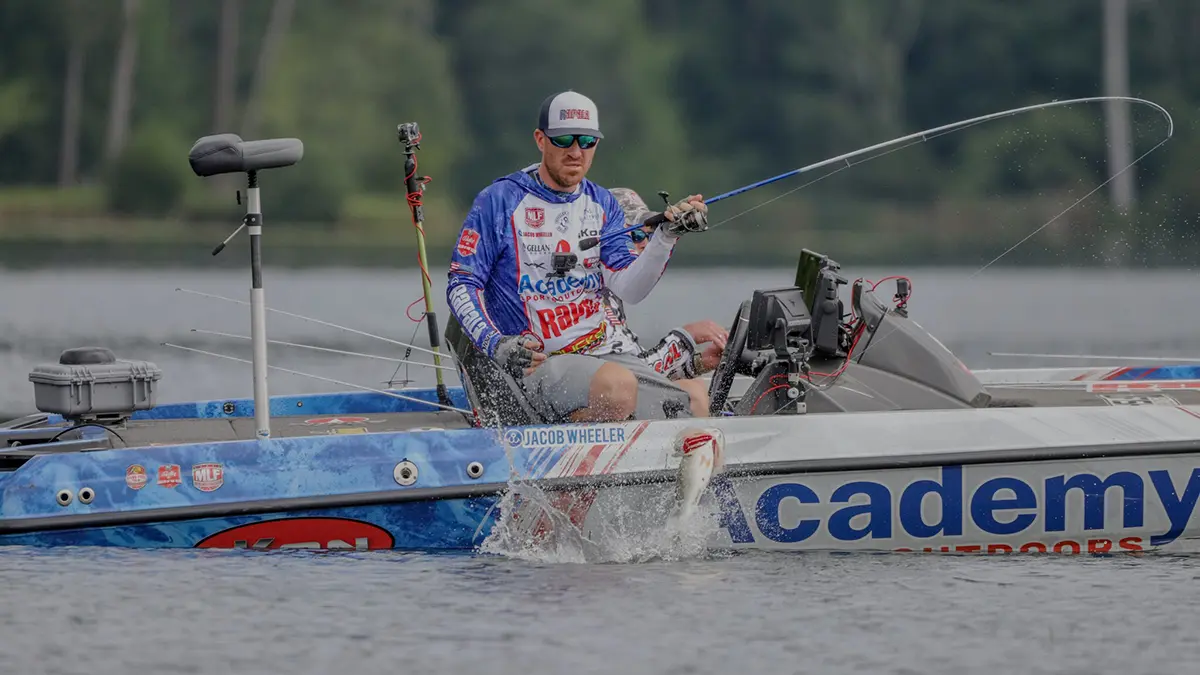
BAITS FOR FISHING THE THERMOCLINE
Wheeler uses a variety of sub-surface baits to fish the thermocline—everything from deep-diving crankbaits and jigs to swim baits, bladed baits and jerkbaits.
The thermocline continues into the fall when the water temperatures in the top layer cools and the lake turns over. After a brief period in which the decaying matter from the bottom is brought to the surface and fouls the top layer, the fish gain renewed vigor and feed actively in advance of winter. They are free to go wherever they want because water temperature and oxygen levels are consistent throughout the lake. But they generally will stay shallow as they and the baitfish relate to the warmest water before winter sets in.
But that turnover is a ways off. For the time being, fishermen such as Wheeler pay attention to the thermocline and how it can position the bass.
“Typically, you will see concentrations of baitfish right above the thermocline,” Wheeler said. “And there will be bass right there, feeding on them. That’s an ideal summer setup.”
